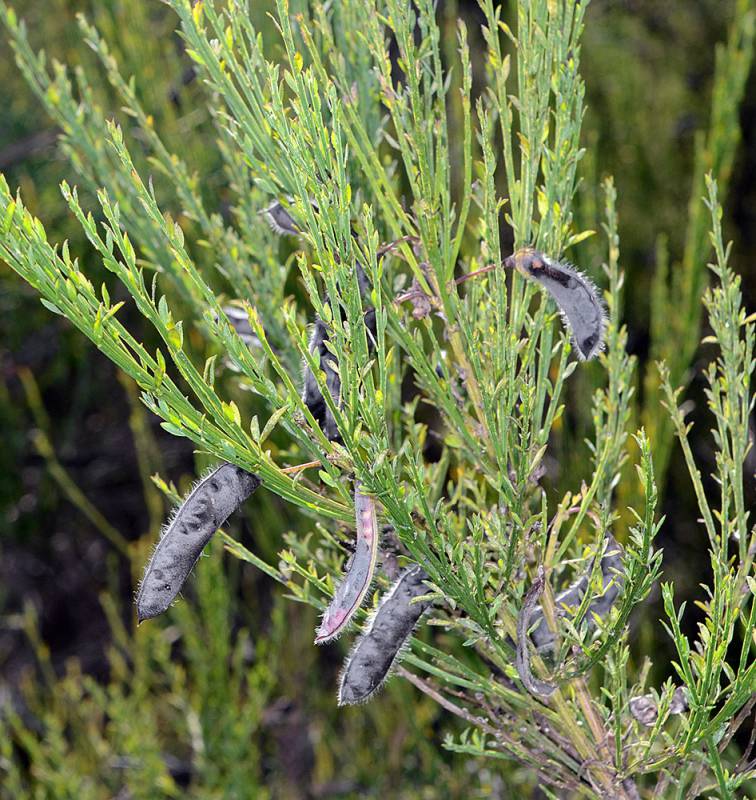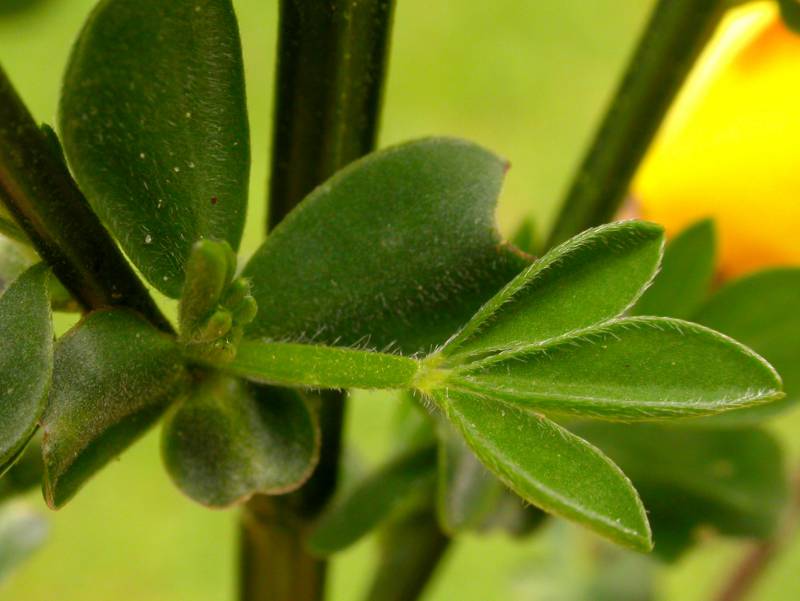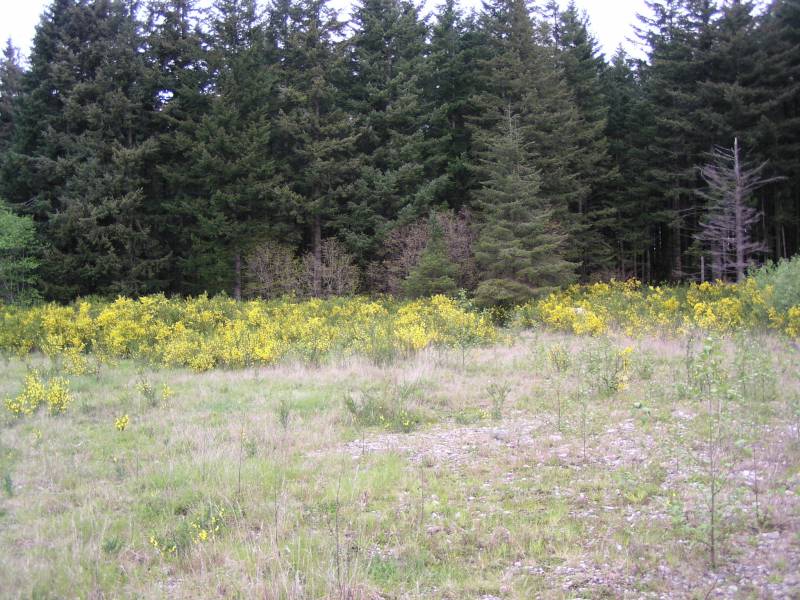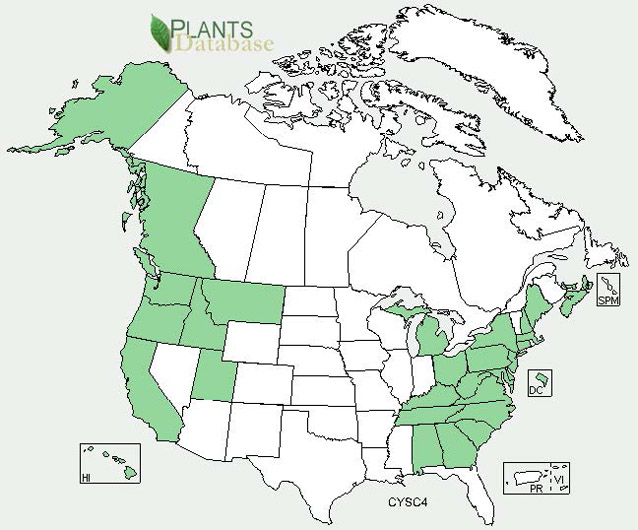Taxonomy: Kingdom - Plantae (plants). Subkingdom - Viridiplantae (Green plants). Superdivision - Embryophyta. Division - Tracheophyta (Vascular plants). Class - Magnoliopsida. Order - Fabales. Family - Fabaceae (Peas, legumes). Genus -Cytisus Desf. Species - Cytisus scoparius (L.) Link
Habitat: Scotch broom, also called Scot's or English broom, is commonly found in areas somewhat moist.
Invasive Spread: Scotch broom is native to northern Africa and parts of Europe, ranging from northern Africa north to Sweden and the British Isles and east to Ukraine. Scotch broom has been introduced to many parts of the world as an ornamental. In North America, Scotch broom was introduced to Virginia in the early 1800s for use as fodder for domestic sheep. It was considered invasive in this area by 1860. Scotch broom was introduced to California as an ornamental in the 1850s, was widely used for roadside erosion control in the early 1900s, and was recognized as a problem in California in the 1930s.
The current North American distribution of Scotch broom is along the Atlantic coast from Nova Scotia to Massachusetts, Delaware, Virginia, and Georgia; along the Pacific coast from British Columbia to central California; and inland to Idaho, Montana, and Utah. It also has scattered occurrences in several inland states in the eastern United States, and occurs in Hawaii. The worst infestations of Scotch broom occur from British Columbia to central California, from the coast to the inland valleys: primarily west of the Cascade Range in Washington, Oregon and west of the Sierra Nevada in California. In California, Scot's broom occurs on more than 700,000 acres in central to northwest coastal and Sierra Nevada foothill regions. Occurrences are also reported further south in the interior valleys of Los Angeles, San Bernardino, Riverside, and Orange counties, and Scot's broom is beginning to invade chaparral and lower montane habitats in the San Bernardino Mountains.
Scotch broom and striated broom are 2 of 4 nonnative invasive broom species that occur in North America. Spanish broom (Spartium junceum) and French broom (Genista monspessulana) occur in similar habitats and have some similar morphological and ecological characteristics. Common gorse is another leguminous shrub that occurs in similar habitats, but is morphologically distinct from the brooms.




